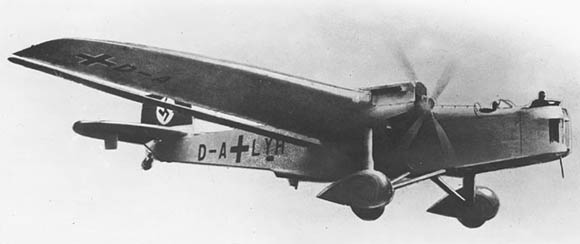
|
Type: Heavy Bomber Origin: Dornier-Werke GmbH Models: Do 13, Do 23F and Do 23G First Flight: Do 13: February 13, 1933 Do 13e: September 1, 1934 Service Delivery: Do 23F May 1935 Final Delivery: 1936 Total Production: 210 Powerplant: Model: BMW VId Type: 12-Cylinder water-cooled vee Numer: One Horsepower: 750 hp Do 23G: Model: BMW VIU Type: 12-Cyl. liquid-cooled vee Numer: One Horsepower: 750 hp Dimensions: Wing span: 83 ft. 3 in. (25.50m) Length: 61 ft. 8¼ in. (18.80m) Height: 17 ft. 8½ in. (5.40m) Wing Surface Area: N/A |
Weights: Do 23G Empty: 12,346 lbs. (5600 kg.) Maximum: 20,282 lbs. (9200 kg.) Performance: Maximum Speed: 161 mph (259 kph) Service Ceiling: N/A Maximum Range at 116 mph (187 kph): 840 miles (1352 km) Armament: Three manually aimed 7.92mm MG 15 in nose, dorsal and ventral positions. Payload: 2,205 lb (1000 kg.) of bombs internally. |
The earlier Do 11 had exhibited several problems, so two initiatives were launched to address those shortcomings. The first resulted in the Do 13. The second effort was a more extensive rework which resulted in the Do 23. Several of the handling problems were thus corrected, but performance of the Do 23 was still considered mediocre, and it saw a limited service life, being phased out of front-line service by the late 1930s. It was replaced by aircraft such as the Heinkel He 111, but it did go on to serve and see action in World War II in the Czech branch of the Luftwaffe.
Sources:
Gunston, Bill & Wood, Tony - Hitler's Luftwaffe
Donald, David - The Complete Encyclopedia Of World Aircraft, 1997, Brown Packaging Books Ltd., London
LUFTWAFFE RESOURCE CENTER > BOMBERS > PREVIOUS PAGE
